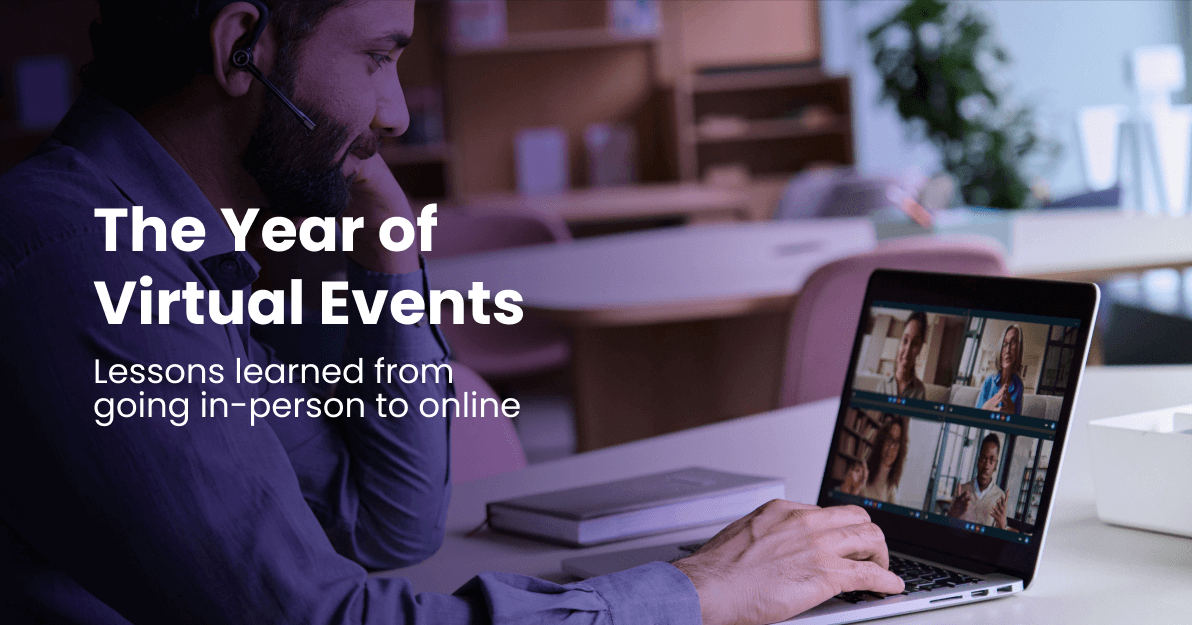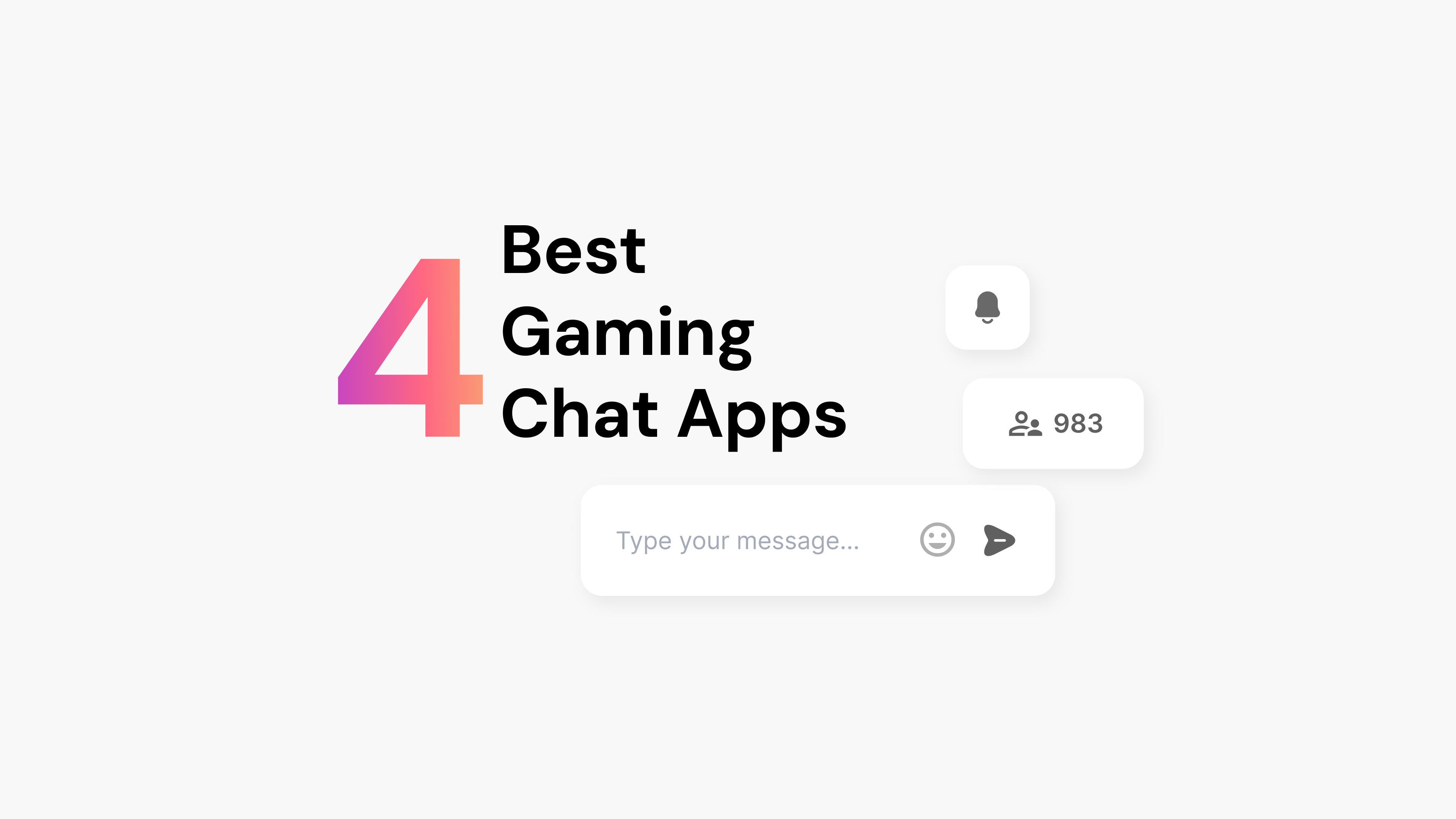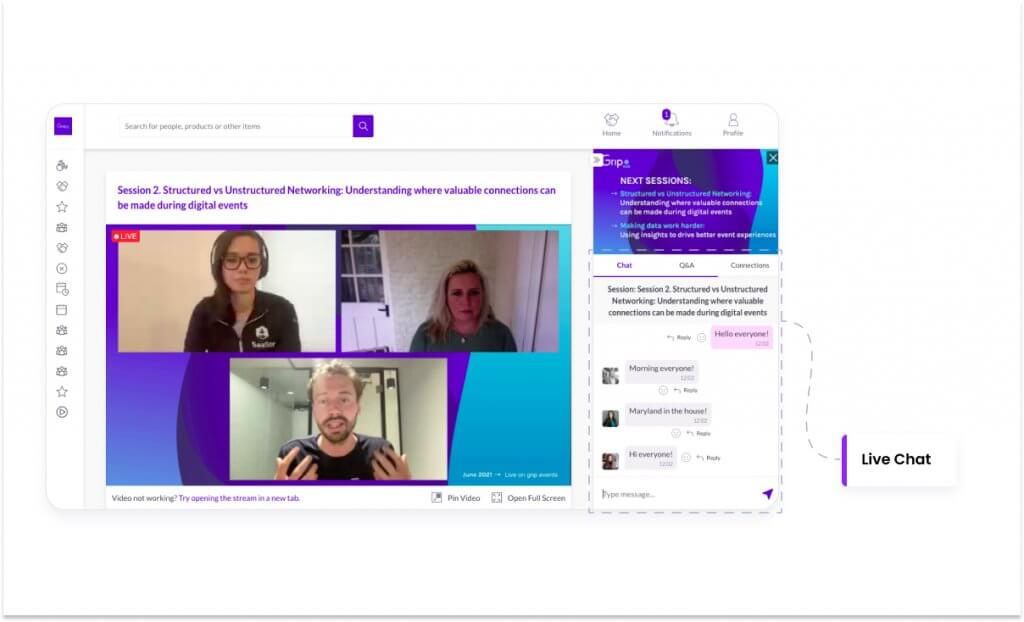
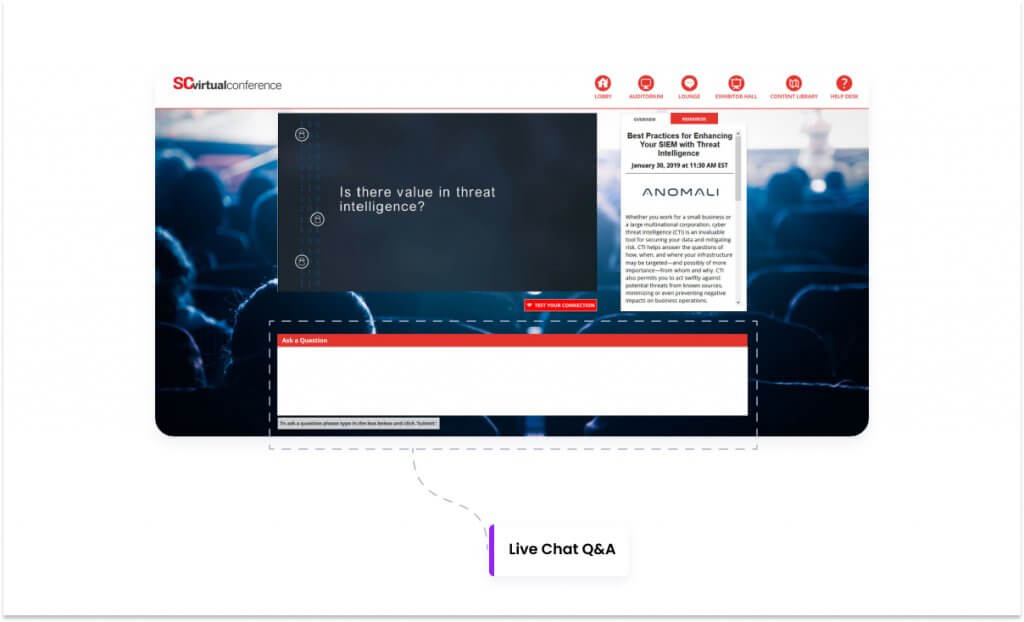
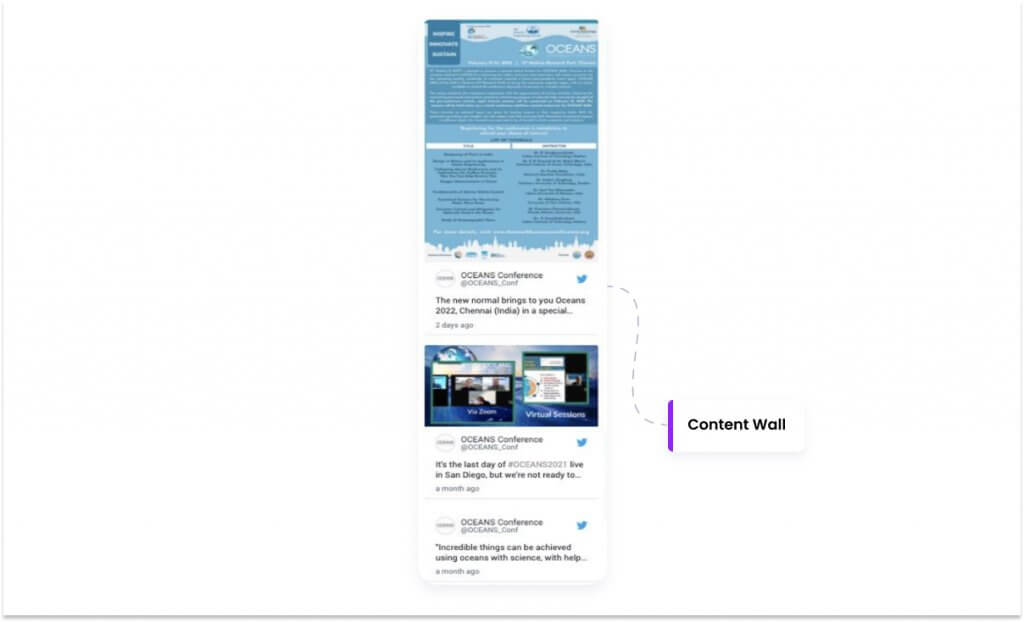


The outbreak of the recent pandemic forced event producers to transition from in-person events to virtual events. While there were many roadblocks, successful event organizers were able to overcome the obstacles and continue hosting events virtually. This guide covers what five companies learned about the transition from in-person to virtual events.
What Event Producers Learned
Event organizers need to keep learning how to optimize their virtual and hybrid events. The quick shift to virtual forced organizers to learn how to adapt quickly. Below are the most important lessons that Arena customers learned from making the transition to virtual.
Hybrid is a Strategy, not an Event Type
Grip published a webinar that positioned “hybrid” as a strategy instead of just an event type. Its research indicated that interest in hybrid events is declining, and that 63 percent of event producers lack a clear strategy for hybrid events.

The company emphasizes that, “Hybrid is not an event type, it’s a strategy and the best hybrid strategy is omni-channel, where organizers use different channels to engage attendees in different ways.” It stresses the importance of completing an objective at every touchpoint instead of completing all objectives at every touchpoint.
It suggests that instead of creating hybrid events, organizers should create a combination of in-person and virtual events. It suggests that on-site events should focus on creating and building relationships, while virtual events should be short and focused on building brand awareness and educating attendees.
Virtual Events can Improve Employee and Customer Connections
TV1, a company focused on live experiences, engagement strategies, and brand activation, has adapted to hosting virtual events. It learned that virtual business conventions can be created in a way to keep employees and attendees connected and engaged.
While in-person events bring people to a physical location and make networking seamless, virtual events can do this too when set up properly. While helping Bayer host its first virtual convention for its pharmaceutical unit, TV1 was able to keep attendees and organizers engaged online.
It emphasized it was important that “the experience did not overlook the dynamism and connections that are so common in the presence and that it engaged employees so that everyone was ‘on the same page’.”
It did this by integrating with Zoom and using augmented reality to facilitate training and using interactivity features to keep attendees engaged. It also enhanced the virtual event by using television logic, gamification features, enhanced scenography, and content transmission strategies.
Virtual Events are Great for Training Employees

WorkCast discovered virtual events can be used to effectively train employees. The company writes on its blog, “Gone are the days of full-day staff training, complete with awkward icebreakers and trust falls. Instead, more and more businesses are using webinars for training purposes.”
Webinars allow employees to take ownership of their own career development, they improve efficiency, and they give companies more flexibility. They can be used to onboard new employees, provide continuing education for teams and individuals, and provide external training.
WorkCast identified that training webinars are more accessible than traditional training methods. Employees can customize their training and complete it at their own pace. Webinars also let employees use voice-to-text software for taking notes, download transcripts for recordkeeping, and add subtitles to eliminate language barriers.
Virtual training can be completed faster because it doesn’t require traveling to a physical location. It’s more cost effective than hosting an in-person training. It can also use Q&As, surveys, and polls to increase engagement.
Cloud Engagement Platforms Enable Much More than Virtual Events
Cloud Conventions recognizes the scope of cloud engagement platforms (CEPs). CEPs don’t simply enable virtual events; they combine state-of-the-art digital marketing technology with collaboration features that encourage networking and interaction between attendees.

Cloud Conventions used a report by Wainhouse Research to break down CEPs into three primary use cases. The report titles them “Webcasts”, “Interactive Events”, and “Virtual Hubs”. Webcasts require the least amount of technological complexity and costs, while virtual hubs require the most.
Webcasts are used as an “online megaphone” to broadcast content. They offer limited attendee engagement options, maximum presenter control, and they’re best used for product launches and lead-generation webinars.
Interactive events are used to combine collaboration and content streams. They’re typically one to two hours in duration, they enable sponsor promotion on-screen, and they’re used to increase attendee engagement and networking.
Virtual hubs are online destinations that let attendees engage in multiple ways. They serve as the gateway for hybrid events, and they offer distinct online communities and can be used for online conferences.
Virtual Events can Enhance Live Sporting Events
Sotic has learned that digital channels and virtual events are great ways to engage live sporting event attendees. Sotic has a video solution that lets brands tell their story, link to specific athletes and events, integrate with their video provider, and monetize their content.

The company recently partnered with a rowing website to enhance the experience of their audience. It introduced its “Live Boat Tracker” to let fans follow live rowing races from the website. It also let viewers track insightful data like distance from leader, stroke rate, and speed.
How Arena can Enhance Virtual Events
Arena’s software is trusted by thousands of companies including Swoogo, Grip, TV1, WorkCast, Cloud Conventions, and Sotic to improve their virtual events. Consider adding one of Arena’s tools for enhancing your own virtual event.
Arena Live Chat
Live chat is a tool that lets attendees respond to polls, ask questions, and interact with your brand and other attendees during virtual events. By adding Arena Live Chat, brands can seamlessly integrate live chat capabilities with their virtual events. The feature lets online attendees provide feedback and share ideas virtually instead of needing to be physically present.
Arena Live Blog
Live blogs let virtual event organizers share quick updates like images, text, video, live scores, maps, and more as an event unfolds. Live blogs can provide important event updates, share ideas, present interviews, and keep attendees informed about speakers. Organizers can use Arena Live Blog to quickly improve their virtual event experience.
Arena Customer Data Platform
Arena Customer Data Platform (CDP) can be integrated with Arena Live Chat and Live Blog to understand customer behavior and interests. Companies are finding it harder to understand their customers because of the heightened restrictions on cookies and data privacy. A CDP can solve this problem by building customer profiles and collecting data from different touchpoints.
Other Resources
For those who want to learn how to create a superior virtual event experience, check out our guide.
For more information on what to say during a live event, we have an eBook with live event scripts.
If you want a comprehensive guide on how to get the best results using live ecommerce, check out our free eBook.
Conclusion
The recent shift from on-site to online events has caused event producers to adapt quickly. Grip learned that “hybrid” is a strategy not an event type. TV1 learned that virtual events can improve both employee and customer engagement. WorkCast capitalized on the benefits of training employees virtually.
Cloud Conventions recognized the several benefits of CEPs, and Sotic used virtual live streams to assist in the sports niche. For assistance with your virtual events, consider adding Arena Live Chat, Live Blog, or CDP. If you want to learn more about virtual event trends in the upcoming year, click the link below.

